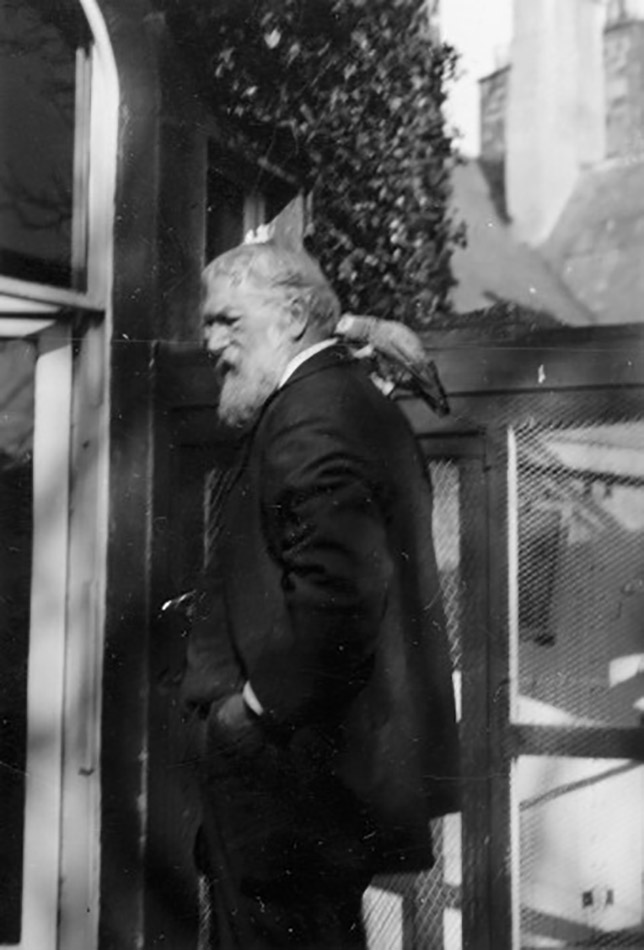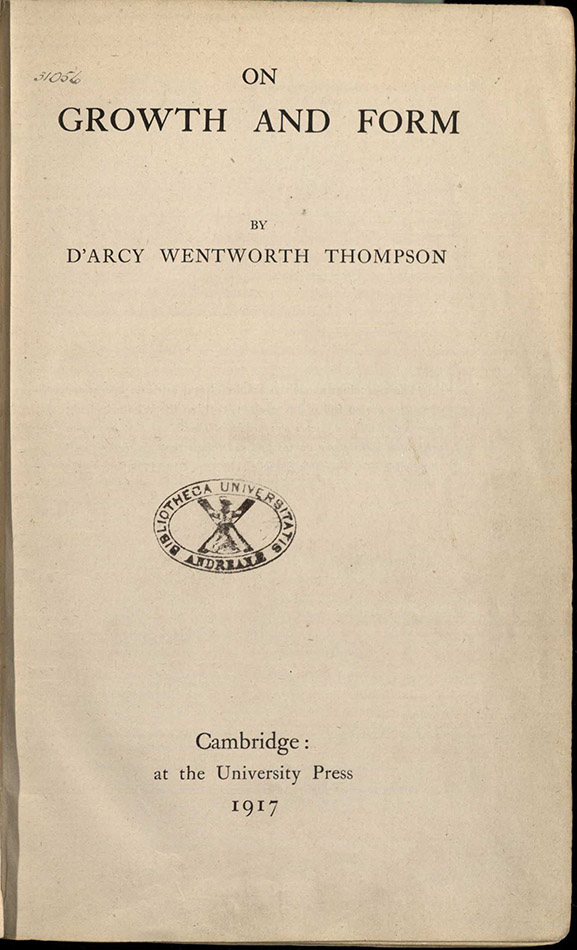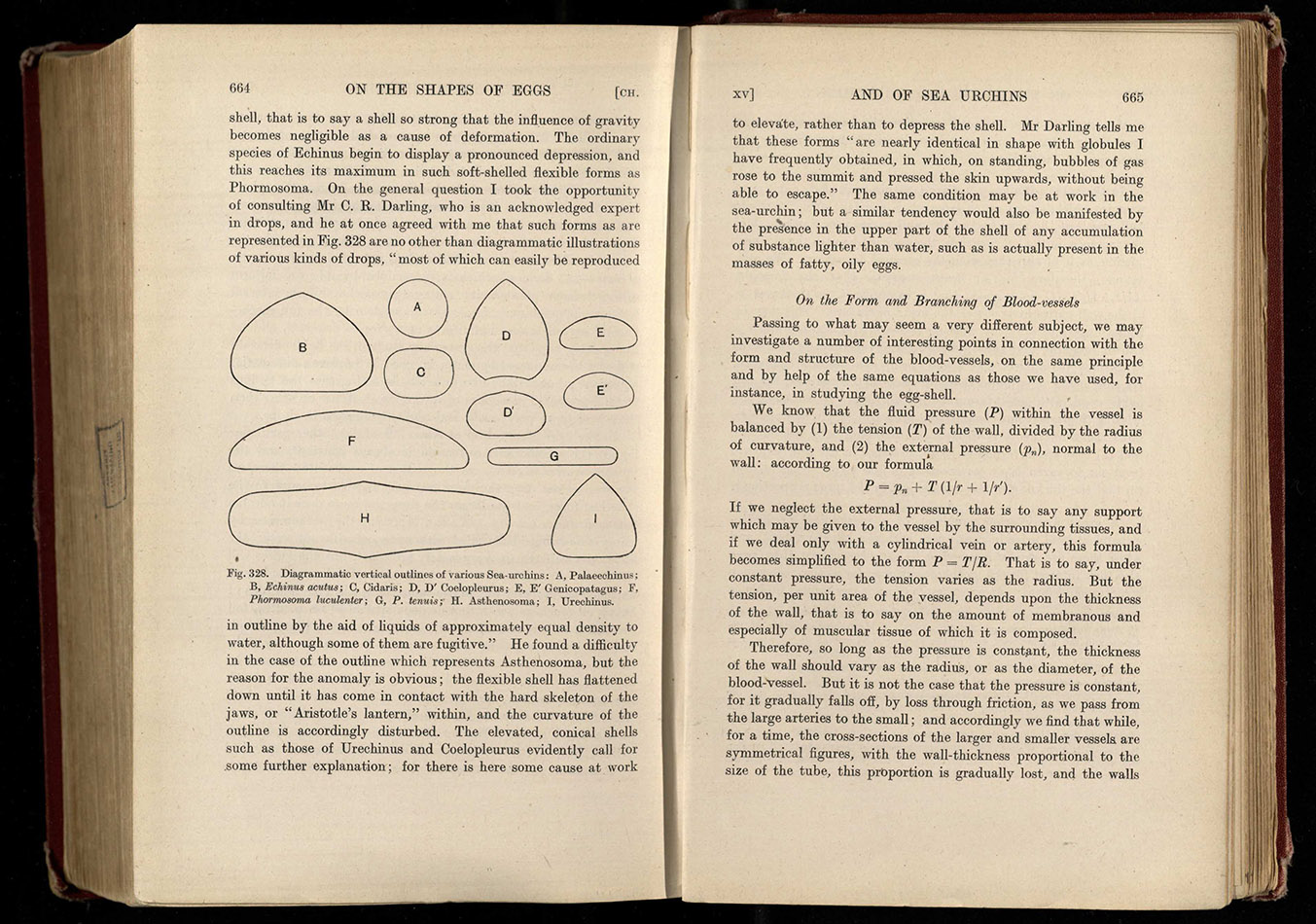An Experimental Take on D’Arcy Thompson’s On Growth and Form
In the second of the reports from our 2018 Visiting Scholars, Matthew Holmes, then of the University of Leeds, now Postdoctoral Research Associate at the University of Cambridge, shares with us his experience of working with the papers of D’Arcy Wentworth Thompson back in July.
***
You chaffed me the other day in town about my ‘craving for omniscience’. It’s not that at all; I’m in continual rebellion against my deplorable ignorance. If only I knew a little mathematics.
Letter from D’Arcy Thompson to George Greenhill, 2/8/1918 ms28692.

D’Arcy Wentworth Thompson (1860-1948) was being modest. He is today remembered as a quintessential polymath, equally capable in the fields of mathematics, classics and natural history. From 1917 to 1948 he held the Chair of Natural History at the University of St Andrews, having moved from University College, Dundee where he had been appointed Professor of Biology in 1885. His greatest work was the monumental On Growth and Form, which appeared in two editions in 1917 and 1942. In his book, Thompson attempted to show how physical forces, such as gravity and surface tension, shape the form of all living things. On Growth and Form takes the reader on a whistle-stop tour of such forms, ranging from the shape of eggs to logarithmic spirals in shells. I had the pleasure of visiting the University of St Andrews Library in July to work with the D’Arcy Thompson papers: a vast collection of Thompson’s manuscripts and correspondence. This rich collection has already attracted a great deal of attention from scholars. Yet I was most interested in which ideas and practices influenced Thompson in the crucial years leading up to the publication of the first edition of On Growth and Form in 1917.

One possible influence already in mind was Louis Compton Miall, first Professor of Biology at the University of Leeds. On March 4th 1892, Miall delivered a lecture at the Royal Institution on the lives of aquatic plants and animals. He began with a series of simple experiments. Miall dropped copper gauze onto water, demonstrating that the surface film of water was strong enough to keep the wire afloat. A similar experiment saw him submerge a cork attached to a wire frame. As the cork rose, the surface of the water pressed down upon the wire to keep it submerged. Surface tension, explained Miall, was a pervasive physical force which shaped the life of aquatic organisms, whether pond skaters or waterlilies. Miall’s invocation of physical forces to explain biology seemed uncannily like Thompson’s approach. However, their correspondence revealed that the two were friendly, but never exchanged – at least on paper – scientific ideas (ms22229).
Yet Thompson was in touch with several of the physicists cited by Miall in his lecture. In 1915, Thompson dispatched a barrage of letters to authors of textbooks and popular works on physics. One recipient was Charles Robert Darling, Lecturer in Science at the City and Guilds Technical College in London. Darling had previously written books on purely practical matters, including guides to heat for engineers and instructions on the proper use of domestic appliances. Yet in London, Darling turned his attention to the physics of liquid droplets. His popular lecture series on the subject was later published as Liquid Drops and Globules: Their Formation and Movements in 1914. His book drew the admiration of Thompson, who wondered if the same forces of gravity and surface tension that shaped droplets also acted on sea urchins. Darling was flattered by the attention and enamoured of Thompson’s theory. After carefully comparing the shape of droplets on a glass plate with a diagram of sea urchin shapes provided by Thompson, Darling thought it highly plausible that the different forms of sea urchins could be explained by appealing to physical forces (ms19102). A version of this very diagram of sea urchins would later appear in On Growth and Form.

The D’Arcy Thompson papers reveal several other examples of Thompson’s interaction with physicists. Not only did Thompson ask others for help, but he also carried out his own experiments on liquid drops and splashes. In October I will present a research paper on these findings at the Annual History of Science, Technology and Medicine Network Ireland Conference at Queen’s University Belfast.
Matthew Holmes
Postdoctoral Research Associate, University of Cambridge
Acknowledgements
I would like to thank all the staff of the Special Collections Reading Room who supported me with my research. Special thanks to Gabriel Sewell for hosting me and Maia Sheridan for guiding me through the D’Arcy Thompson papers.